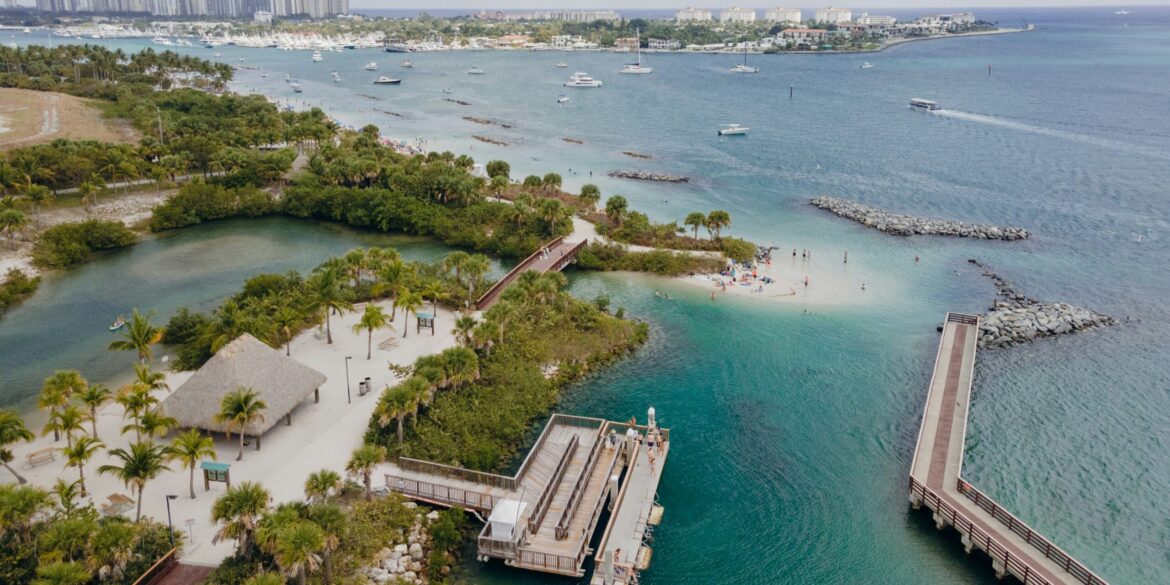As climate change continues to be one of the most pressing global challenges, cities around the world are increasingly turning to clean energy and sustainability solutions to mitigate their environmental impact. Miami, known for its sunny weather and vibrant culture, is at the forefront of the clean energy movement in the United States. In this article, we will explore Miami’s commitment to clean energy, from renewable energy initiatives to sustainability projects that are helping the city become a more eco-friendly and climate-resilient community.
Miami’s Clean Energy Transition:
Miami has long been dependent on fossil fuels to meet its energy demands, but in recent years, the city has begun to make significant strides toward a cleaner, more sustainable energy future. In 2023, Miami-Dade County announced its “Clean Energy Miami” initiative, which aims to transition the county’s energy use to 100% renewable sources by 2050. This bold goal reflects the city’s commitment to reducing its carbon footprint and combating climate change.
One of the key components of this initiative is the expansion of solar energy across the city. In 2024, the City of Miami launched a new program that incentivizes residents and businesses to install solar panels by offering rebates and tax credits. The Miami Solar Energy Program aims to increase the number of solar-powered homes and buildings in the city, which will help reduce reliance on non-renewable energy sources like coal and natural gas.
According to the Solar Energy Industries Association (SEIA), solar energy in Florida has grown exponentially in recent years, with the state ranking among the top 10 in the country for solar capacity. Miami, with its ample sunshine, is well-positioned to take advantage of solar power as a primary source of clean energy.
Wind Power and Other Renewable Sources:
In addition to solar energy, Miami is exploring other forms of renewable energy, including offshore wind power. The city is currently working with state officials to assess the feasibility of offshore wind farms off the coast of Florida. These wind farms could generate significant amounts of clean energy and provide a new source of local employment. The potential for wind power in Miami is immense, as the region’s coastal location makes it an ideal spot for offshore wind installations.
Miami is also looking into energy storage solutions to ensure a reliable energy supply during periods of high demand. Battery storage technology is rapidly advancing, and Miami is investing in large-scale energy storage systems that can store solar and wind power for use when the sun isn’t shining or the wind isn’t blowing. These storage solutions will help balance supply and demand and ensure the city’s energy grid remains stable while relying on renewable sources.
Climate Action and Resilience:
Miami’s commitment to clean energy is closely tied to its broader efforts to tackle the challenges posed by climate change. As a coastal city, Miami is highly vulnerable to rising sea levels, extreme weather events, and increased flooding. To address these risks, the city has launched several initiatives aimed at building resilience to climate change.
In 2024, the Miami Climate Alliance released a comprehensive Climate Action Plan, outlining strategies to reduce greenhouse gas emissions, prepare for climate impacts, and transition to a more sustainable future. The plan includes measures such as improving the energy efficiency of buildings, investing in sustainable infrastructure, and expanding the use of green roofs and permeable pavements to reduce urban heat and manage stormwater.
Miami has also been proactive in adapting its infrastructure to withstand the impacts of climate change. In 2023, the city completed a $100 million project to upgrade its stormwater management systems, including the installation of advanced flood barriers and drainage systems in flood-prone neighborhoods. These investments are part of a larger effort to protect the city’s infrastructure from the impacts of rising sea levels and increasingly frequent storms.
Private Sector Involvement:
In addition to local government efforts, Miami’s private sector is playing an increasingly important role in advancing clean energy and sustainability. Many businesses in the city are embracing green building practices by constructing energy-efficient buildings, utilizing sustainable materials, and installing renewable energy systems. For example, the Miami Design District is home to a number of buildings that are certified by the Leadership in Energy and Environmental Design (LEED) program, a global standard for green building design.
In 2024, several major corporations based in Miami, including Ryder Systems and Norwegian Cruise Line, announced their commitment to achieving carbon neutrality by 2050. These companies are investing in renewable energy projects, reducing waste, and implementing sustainable business practices to help meet their sustainability goals.
Conclusion:
Miami is emerging as a leader in clean energy and sustainability, driven by a commitment to reduce its environmental impact, protect its residents from climate change, and transition to a more sustainable future. From solar power and wind energy to climate resilience initiatives and green building practices, Miami is embracing innovation to create a cleaner, greener city for future generations. As the city continues to grow and develop, Miami’s dedication to clean energy and sustainability will play a crucial role in shaping the future of urban living.

